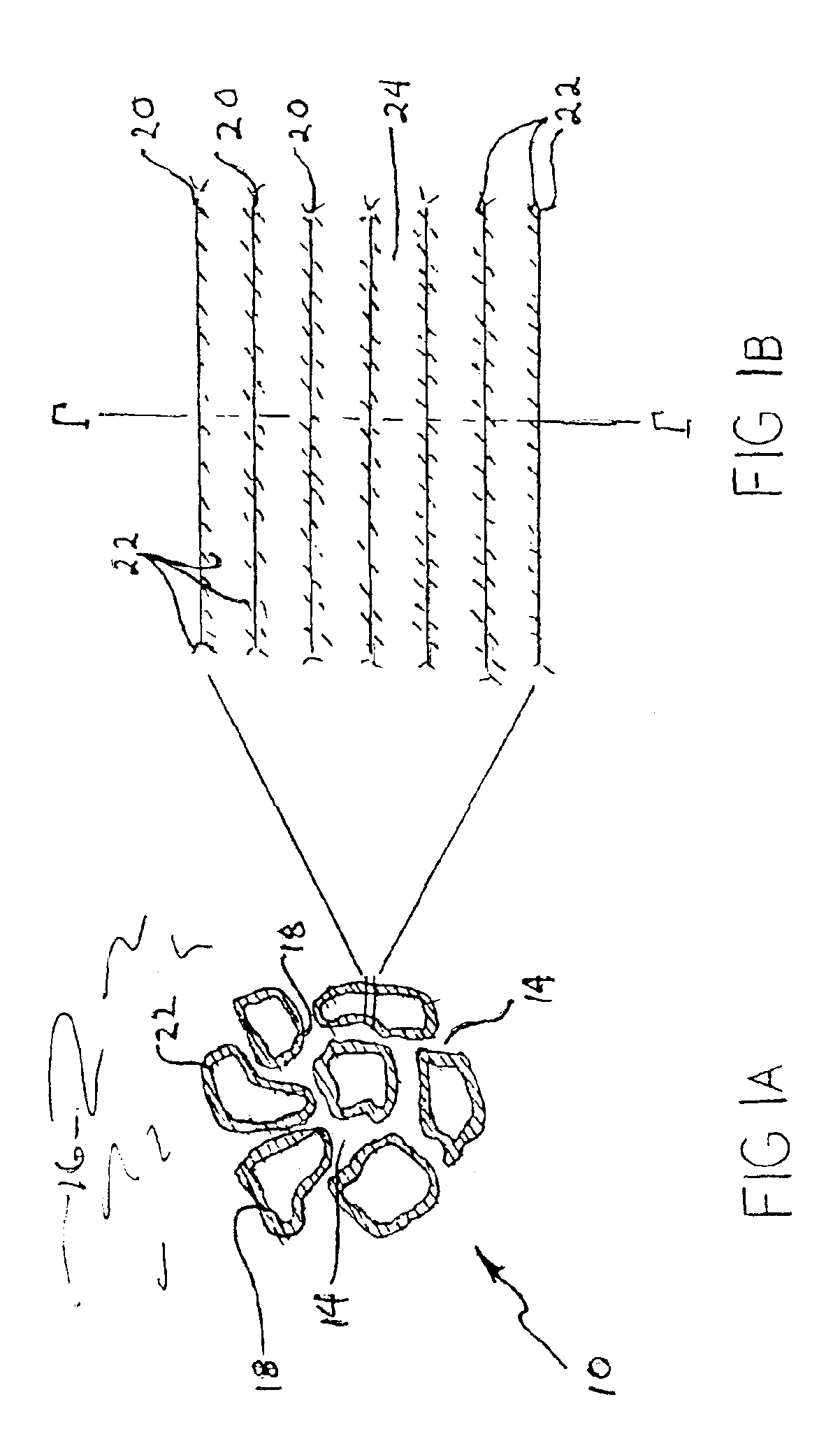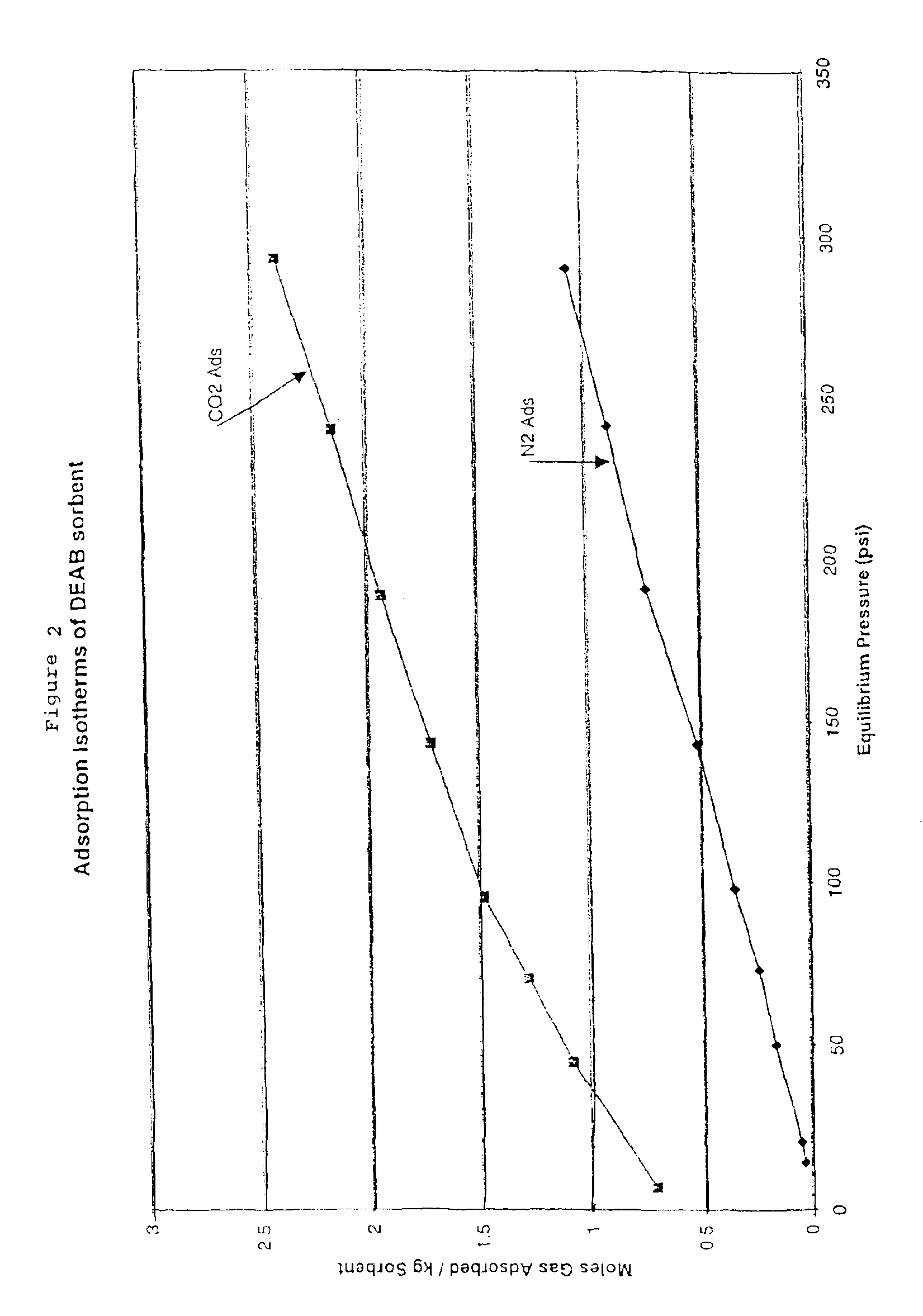Solid sorbents for removal of carbon dioxide from gas streams at low temperatures
a technology of carbon dioxide and solid sorbents, which is applied in the direction of hydrogen sulfide, separation process, other chemical processes, etc., can solve the problems of exacerbated corrosion problems of process equipment, limited life of amine solutions, and energy-intensive processes outlined supra, and achieves easy regenerated through many cycles , the effect of saving resources
- Summary
- Abstract
- Description
- Claims
- Application Information
AI Technical Summary
Benefits of technology
Problems solved by technology
Method used
Image
Examples
example a
[0061]Twenty grams (g) of bentonite, 8 grams of calcium sulfate dihydrate, and 3 grams of anhydrous white (not cobalt-impregnated) calcium sulfate desiccant (20 to 40 mesh) (the latter also known as Drieritem) were homogeneously mixed in a mixer. Twenty grams of diethanol amine (DEA) were mixed with 6.5 g of ethylene glycol monoethylether and 2 milliliters (mLs) of water. Twenty mLs of this liquid mixture was added slowly to the solid mixture while stirring to create a homogeneous mixture having the same consistency throughout. Eventually, pellets naturally formed. The pellets were dried in an oven for one hour at 60° to 80° C.
example b
[0062]Bentonite, calcium sulfate dihydrate, and anhydrous calcium sulfate desiccant were combined as in Example A. Twenty-five grams of monoethanolamine (MEA) were mixed with 2 mLs of water and the entire liquid mixture added to the solid mixture, while stirring, until pellets formed. The pellets were dried as before.
example c
[0063]Bentonite, calcium sulfate dihydrate, and anhydrous calcium sulfate desiccant were combined as before. Twenty grams of diisopropanol amine (DPA), 2 mLs of water, and 20 mLs of ethanol were mixed. The resulting mixture was allowed to stand for 10 minutes until part of the solvent had evaporated. The liquid mixture was slowly added to the solid mixture while stirring. Pellets formed and were dried as before.
PUM
| Property | Measurement | Unit |
|---|---|---|
| temperature | aaaaa | aaaaa |
| temperature | aaaaa | aaaaa |
| temperatures | aaaaa | aaaaa |
Abstract
Description
Claims
Application Information
 Login to View More
Login to View More - R&D
- Intellectual Property
- Life Sciences
- Materials
- Tech Scout
- Unparalleled Data Quality
- Higher Quality Content
- 60% Fewer Hallucinations
Browse by: Latest US Patents, China's latest patents, Technical Efficacy Thesaurus, Application Domain, Technology Topic, Popular Technical Reports.
© 2025 PatSnap. All rights reserved.Legal|Privacy policy|Modern Slavery Act Transparency Statement|Sitemap|About US| Contact US: help@patsnap.com



